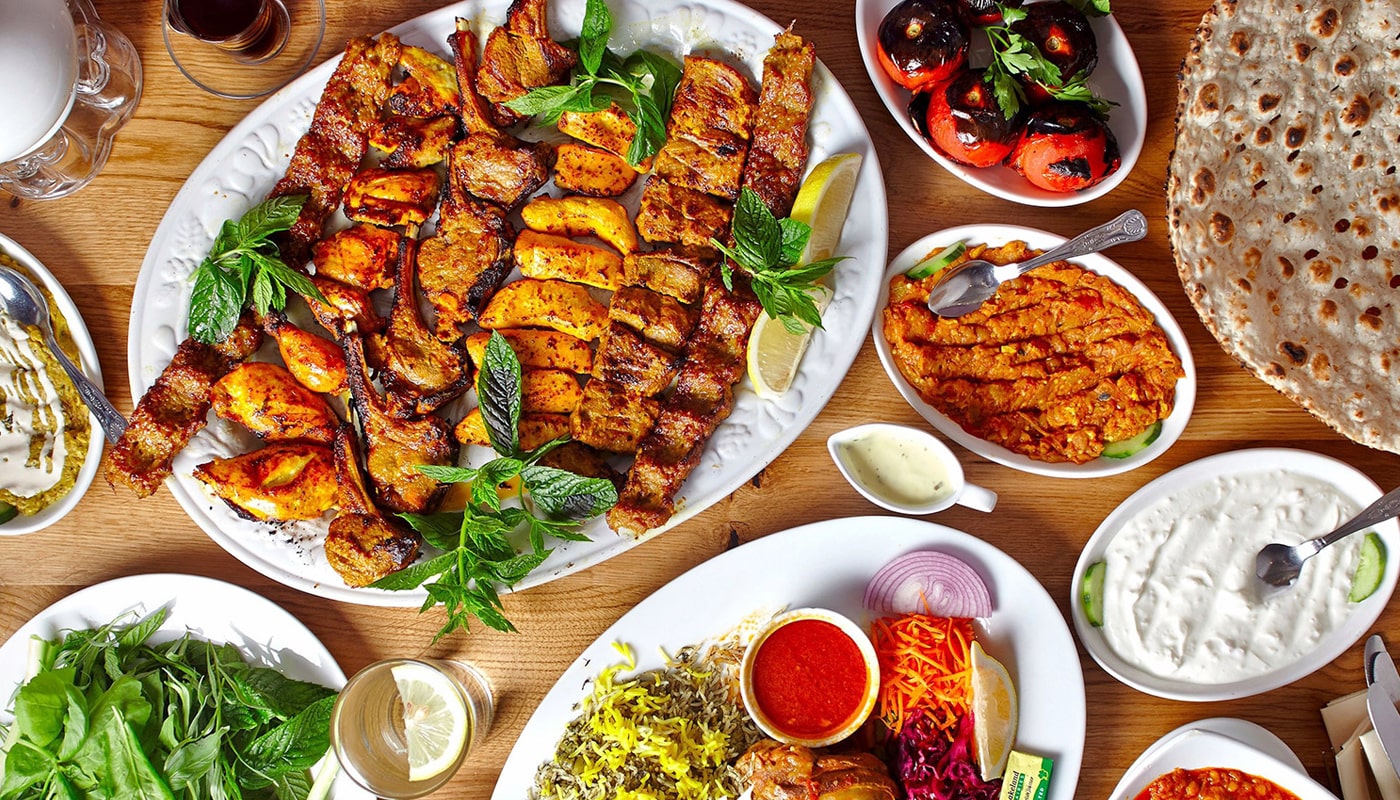
DISHES
Iranian cuisine includes a wide variety of foods. Central to the Persian cooking are the numerous rice dishes, some containing almonds, pistachios, glazed carrots or orange peels and raisins; others with vegetables and spices and occasionally with meat which is called Polo (including Loobia Polo, Albaloo Polo, Sabzi Polo, Zereshk Polo, Baghali Polo, and others). Most often the rice is perfected and finished by the use of specially prepared saffron from Iran and cooked slowly after boiling to have a hard crust at the bottom (Tahdig). Other recipes include Khoresht (stew that is served with white Iranian rice: Ghormeh Sabzi, Gheimeh, Fesenjān, and others), dumplings, Chelow Kebabs (rice served with roasted meat: Barg, Koobideh, Jujeh, Shishlik, Soltani, Chenjeh), Ash (a thick soup: for example Ash-e Anār), kuku (vegetable souffle), stuffed vegetables accompanied by different sauces and a diverse variety of salads, pastries, and drinks specific to different parts of Iran. The list of Persian recipes, appetizers and desserts is extensive. Many of the dishes are vegetarian, and the mixing of sweet and savory, such as grains stewed with fruit and spices produce unique meals. The result is a feast of flavors and textures as well as a visual delight. Most cooking is done from scratch and ready-made products and previously prepared ingredients such as frozen mixed herbs currently becoming popular with the younger generations are not acceptable to many. Iranians use a variety of breads. The breads are mostly flat and all are baked in special ovens similar to clay ovens in Indian restaurants (Lavash, Barbari, Sangak, etc.). In Iran the bread is bought fresh every day and sometimes for each meal. Using dairy products in Iranian cuisine (like Yogurt, Doogh, and Kashk) has an old historical background. For example, Kashk (dried condensed whey) is used in dishes like Kallajush. It consists of fried onions, dried herbs, and boiled Kashk, eaten with bread (crumbled or in pieces). Foods containing Kashk, including Kallajush, have been common among tribal peoples and villagers for centuries, especially in wintertime, as it is both easily prepared and affordable for low-income families. Kashk is quite nutritious and contains protein and calcium. Kashk processing was one of the easiest and most effective ways of conserving dairy products in hot climates during pre-modern times. Iranians are avid consumers of dairy products and many still make their own yogurt and cheese at home.


